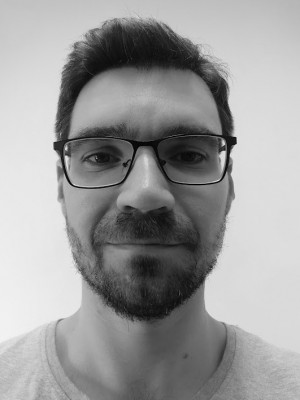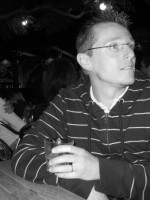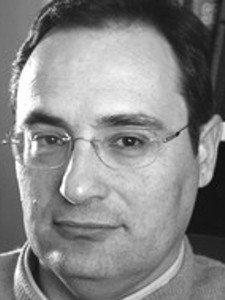resumo
The ability of a calix[4]arene derivative (CX-1), bearing four protonated -N-3(+) groups located in the upper rim and aliphatic tails in the lower rim, to interact with a 1,2-dioleoyl-sn-glycero-3-phosphocholine (DOPC) model bilayer and promote transmembrane chloride transport was investigated by molecular dynamics (MD) simulations. Unconstrained MD simulations show that the interaction of CX-1 with DOPC occurs via the -N-3(+) groups, which are able to establish electrostatic interactions and multiple hydrogen bonds with the DOPC phosphate groups, while the aliphatic tails point towards the water phase (when CX-1 starts from the water phase) or to the membrane (when CX-1 is initially positioned within the bilayer). The interaction does not induce any relevant perturbation on the biophysical properties of the bilayer system (area per lipid, thickness, and hydration) apart from a systematic increase in the order parameter of the C2 carbon atom of the sn-1 lipid tail, meaning that the bilayer conserves its integrity. Since total internalization of CX-1 was not observed in the unconstrained MD time-scale, constant velocity steered molecular dynamics (SMD) simulations were performed in order to simulate the CX-1 permeation across the bilayer. At pulling velocities lower than 0.0075 nm ps(-1), chloride transport was observed. The Potential of Mean Force (PMF), calculated with the weighted histogram analysis method, indicates a barrier of ca. 58 kJ mol(-1) for this mobile carrier to cross the membrane. (C) 2013 Elsevier B.V. All rights reserved.
palavras-chave
MOLECULAR-DYNAMICS SIMULATIONS; AMBER FORCE-FIELD; LIPID-BILAYERS; COMPUTER-SIMULATIONS; DIOLEOYLPHOSPHATIDYLCHOLINE BILAYERS; PHOSPHOLIPID-BILAYERS; MEMBRANE; CALIXARENES; ARGININE; BEHAVIOR
categoria
Biochemistry & Molecular Biology; Biophysics
autores
Costa, PJ; Marques, I; Felix, V
nossos autores
agradecimentos
The authors acknowledge the financial support from QREN-FEDER through the Operational Program Competitiveness Factors - COMPETE and National Funds through FCT (Fundacao para a Ciencia e a Tecnologia) under project PTDC/QUI-QUI/101022/2008. P. J. C. thanks FCT for the postdoctoral grant SFRH/BPD/27082/2006 and project




